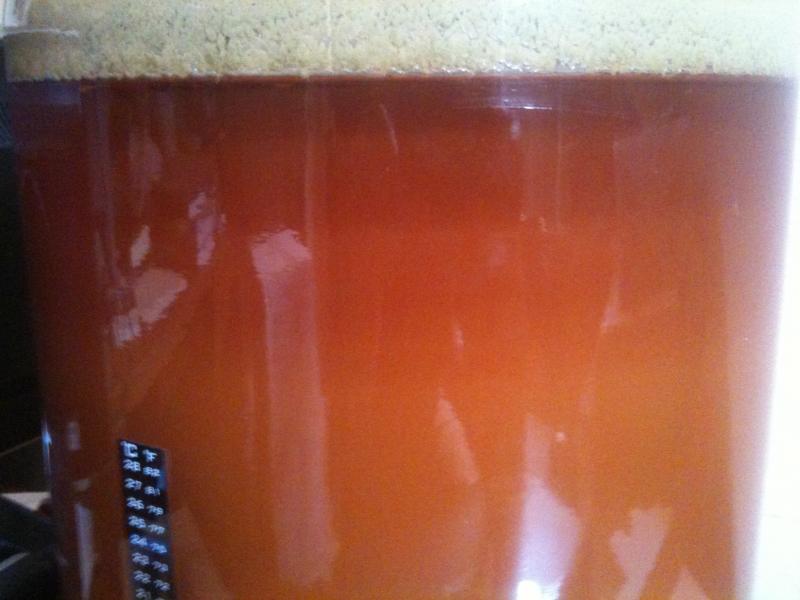That is cool!
I would guess that you have layering by density. Since the yeast have slowed in fermentation the natural mixing they do has slowed allowing the stratification.
When the sediment falls, I would bet you will have a great beer on your hands. Or, soon, passing over your lips.
Yes, I did notice that as well. While the yeast was churning around, it didn't have a chance to settle. Once it slowed down, the layering started. Guess that means that the different sizes or densities were there to start with. I wonder if a yeast cell is a different size, it would have a different density?
After doing a little research, I think it might have something to do with the reproductive cycle.
If you look at the stratification it is clear that there are broad difference between the yeast cells. This seams to rule out the yeast simply being different sizes. If there were a broad range of sizes then it would simply fade from top to bottom.
I've got two possible reasons. First when a mother cell splits off a daughter cell, the daughter cell is always smaller. (Unless it's a species that reproduces by fission, but that doesn't apply to beer.) Plus the mother cell will have a bud scar and the daughter will have a birth scar on the wall of the cell. The amount of scars on the walls can be used to determine the age or amount of reproductive cycles in the yeast. If the scars change the density of the cells then the different layers could be different generations of yeast. I'm not too sure about this hypothesis because I'm pretty sure that there are more than four generations of yeast reproduction and there are four layers. Plus, this same layering happened a week ago when this Belgian Tripel slowed down the first time. I raised the temp, it started up again and the layers went away. Once it slowed again the same number of layers appeared. If there were more reproductive cycles there would be more layers.
Here's a better solution. The periodic events in the cell cycle can be divided into four phases; DNA synthesis, post-synthetic gap, mitosis, and pre-synthetic gap. And guess what? When the yeast are suffering from nutrient starvation, the process is stopped. Just like what happens at the end of fermentation. Maybe the layers are the different yeast cells in different phases.
Or maybe the cyclin phases, metaphase, anaphase, inactive, and active. I'm really not sure. Was hoping that there was some cellular biologist that could explain it in layman's terms.
Probably because that's what it's supposed to look like. It's doing it's job; trust me. Not every fermentation looks/acts the same. Even with the same ingredients and yeast. Just let it go and forget about it until it's time to rack/bottle.
Thanks for the tip, but I think I got it. Really was wondering about the science behind it, not when to rack.
Not all yeast cells are the same size. How far into the fermentation are you? It looks like flocculation is just starting.
I put it into the fermenter on 14 May. After about two weeks, it slowed and the same layers formed. I raised the temp, and it started churning away again and in the last few days, so about 5 weeks, it has started layering up the same way.







